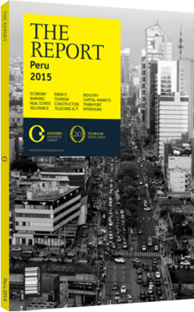Lima’s metro network continues its much anticipated expansion
Moving through Lima has become increasingly difficult. Municipal authorities calculate that the average trip through the city takes 45 minutes and advances at an average speed of 17 km per hour. This is the result of urban growth, which over the years has increasingly burdened the capital’s commuters.
Obstacle Course
There are 31,500 public transport buses covering 559 routes around the capital. Figures by Lima’s Urban Transport Management Body show that despite having 120,000 officially registered taxis, a total of 200,000 were in circulation in the city as of September 2014. In addition, there are 1.4m private vehicles and cargo trucks contributing to congestion. To counter the transportation hurdles, authorities aim to establish a comprehensive urban transport network. This is partially being achieved by expanding the metro system. Line 1 of Lima’s metro is already fully functional, and construction is set to start on Line 2 before the end of 2014. The completed Line 1 has reduced to 50 minutes a trip that once took three hours. With a total of six metro lines planned, getting around the city is set to become even easier.
However, reaching this point has been a long process. With plans initially drawn up in the mid-1970s, the capital’s metro project was put on hold during the economic and social unrest that affected much of the country during the 1980s and early 1990s. The project was later recovered, and the government launched a tender for the construction of the first line in 2009.
The Ministry of Transport and Communications’ ( Ministerio de Transportes y Comunicaciones, MTC) 2013 figures show that Line 1 carried 36.1m passengers during its first full year of operation. The first section of the 34-km line connects San Juan del Lugarincho with the Vila del Salvador district. Section two, completed in June 2014, runs between Grau station and San Juan de Lugarincho, on the outskirts of Lima.
Stretching The Line
In March 2014 the MTC awarded a tender to build and operate the second metro line, the first in the country to be completely underground.
The bid was won by Consórcio Nuevo Metro de Lima (CNML), a group made up of Spanish contractors Actividades de Construccion y Servicios and Fomento de Construcciones y Contratas, as well as two Italian firms, Salini Costruttori and Finmeccanica. At $5.7bn, the project will comprise a 35-km line through a tunnel, connecting 35 stations and linking the municipality of Callao to Ate, towards the east of the city.
Financing
The government is co-financing the project – one of the country’s most expensive infrastructure endeavours – to the tune of $3.7bn, which will go to construction and acquisition of trains, as well as $490m for expropriation of land. The government also committed to cover any unexpected costs related to geology that may arise during construction. CNML is expected to contribute $1.47bn to the project, which is scheduled for completion by June 2019.
Some elements of the line’s design have raised controversy, with Peru’s Association of Engineers claiming that a different layout, with sections of the track built on the surface and tunnels dug at lower depth, could reduce the total price tag to $4.3bn.
Third Line Studies
Work is also progressing on the third metro line. In September 2014 the MTC awarded a $17.6m contract for the initial feasibility studies to a consortium made up of France-based Ingerop and the Spanish office of international consultancy PwC.
Depending on how long the study phase will last, authorities expect to be able to award the project for the construction of the new metro line by 2016.
Lima’s metro is already contributing to the improvement of transport in the capital. However, due to the high investments needed, long-term sustainability of the system at affordable prices will require efforts to position the system as a credible and efficient way to improve mobility for commuters. Coordinating efforts underground with improvements to the city’s bus system – which relies on a large number of private operators, high-polluting buses and a hectic network – will help to develop a coherent public transport system.
You have reached the limit of premium articles you can view for free.
Choose from the options below to purchase print or digital editions of our Reports. You can also purchase a website subscription giving you unlimited access to all of our Reports online for 12 months.
If you have already purchased this Report or have a website subscription, please login to continue.

